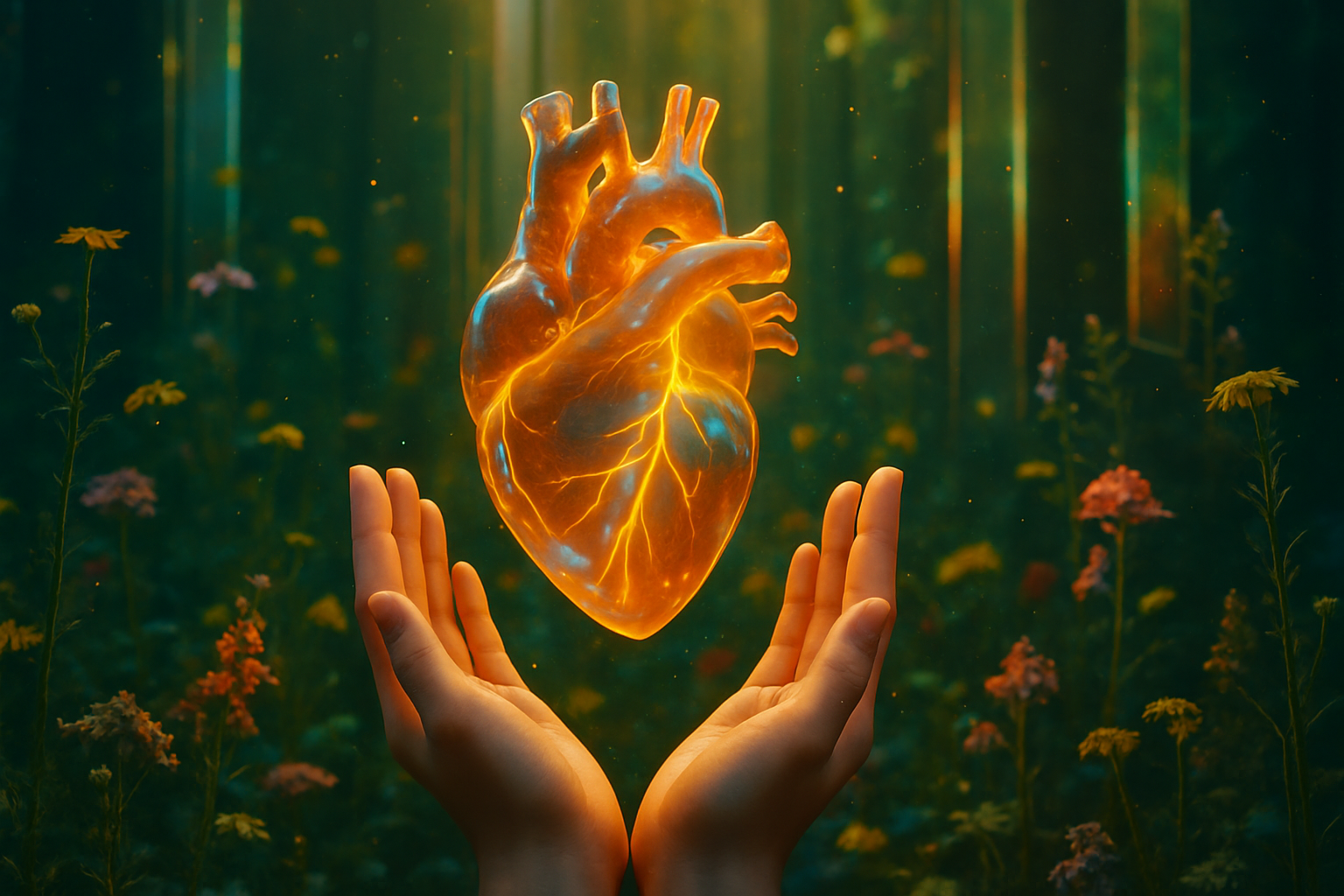TCP014 | ⏰~5min read
Welcome to The Contemporary Polymath Newsletter, where you broaden your horizons, feed your curiosity, and spark new ideas on Thursdays by Naya Moss

👋🏾 Hey there friend,
Last week, I spent time wandering through a few different museums, and one exhibit really stuck with me, an installation where someone’s heartbeat was translated into moving visuals. Watching it made me pause.
It reminded me that our bodies are always talking. Sometimes in big ways, a tight chest, a jolt of anxiety. Other times, it’s more subtle. A shift in breath. A restlessness. A sense that something’s off before we even know why.
That got me thinking: what if we could understand those signals better? What if the body isn’t just reacting, but communicating, constantly?
I followed that question down a few fascinating rabbit holes this week. Here’s what I found.
🌍This Week’s Explorations
Art
🎨 What if your heartbeat painted the walls, or your breath composed a song? Biofeedback Art transforms your body’s internal rhythms into sound, light, and motion. The gallery doesn’t just show art—it responds to you. These pieces are shaped by emotion, not just about it. In a world that pulls us outward, this kind of art invites us back in.
Psychology
🧠 Your body often knows how you feel before you do! A tight chest, a flutter in the gut, these aren’t random, they’re signals from your nervous system, trying to speak. Interoception Training helps you decode those internal messages, offering a quieter, more grounded kind of self-awareness. It’s not about fixing feelings, but finally understanding where they begin.
History
🏛️The History of Biofeedback began with a simple question: what if the body’s automatic systems weren’t so automatic after all? From 1960s labs to modern wearables, this story follows how scientists, artists, and patients turned heartbeats, brainwaves, and breath into tools for awareness and healing. At its core, Biofeedback History reminds us that perception isn’t passive, it’s something we can train.
Science
🫀 Your heartbeat doesn’t just measure stress, it reveals resilience. Heart Rate Variability (HRV) shows how well your nervous system adapts to change. It’s not about speed, but flexibility, the subtle shifts between beats that tell us whether your body can roll with pressure or gets stuck in it. HRV is less about how hard your heart works, and more about how wisely it responds.
🔍 Intriguing Finds
A curated selection of news and discoveries
- 💡 Your brain’s own cannabinoids might hold the key to calming trauma-related fear
- 🧠 Just five minutes of brain training a day could sharpen your brain as you age
- 🚢 New evidence reignites the mystery of Noah’s Ark with a possible formation found in Türkiye
- 🌉 Ships have been crashing into the Brooklyn Bridge for nearly 150 years, and it’s still happening
- 🤖 Google I/O 2025 dropped over 100 updates, AI, XR, search, and beyond—blurring lines between knowledge, tools, and creativity
- 📱 Google’s NotebookLM just went mobile, with new tools to turn complex ideas into clear, customizable audio and visual overviews, perfect for curious minds on the move
📖 Books We Are Reading
Book rec for this week

📘 The Body Keeps the Score by Bessel van der Kolk
A foundational book on how trauma lives in the body, and how healing isn’t just mental, but physical too. Through science, case studies, and lived experience, Van der Kolk explores how we can reconnect with ourselves after disconnection.
🦓 Why Zebras Don’t Get Ulcers by Robert Sapolsky
This one’s a favorite for a reason. Sapolsky makes the science of stress unexpectedly funny, deeply human, and surprisingly practical. If you’ve ever felt overwhelmed and wondered why your body reacts the way it does, this book will explain it beautifully.
🧠 The Extended Mind by Annie Murphy Paul
This book completely rethinks what it means to “use your brain.” Paul explores how cognition doesn’t stop at the skull, it extends into your body, your tools, and even your relationships. If you’re into embodied intelligence, this one’s a gem.
👥 Readers Corner
Know someone who lives at the intersection of disciplines? Or is that you? I’m looking to feature curious, creative thinkers in an upcoming issue, artists who love science, developers who read philosophy, healers who build tech, and beyond.
If you’re exploring unexpected connections across fields, I’d love to hear from you.
💭 How Inquisitive
🔙 Answer to last week’s question
🫀 What’s the name of the practice that uses real-time data from your body to help regulate stress and focus?
It’s called biofeedback, a technique that turns your body’s signals into information you can actually use. Sensors track things like heart rate, temperature, and breath, helping you learn to shift your state in real time. It’s like learning the language of your nervous system, and finally answering when it speaks.
⏭️Question for next week
👁️ What’s it called when your brain combines sound and sight into one experience?
P.S. Here’s something neat I noticed: we’re about to hit a string of palindrome dates (dates that read the same forwards and backwards). From 5/22/25 through 5/29/25, each date will be a perfect mirror of itself. Pretty rare to get eight palindrome dates in a row!
Take care, Be kind. Have a wonderful day, evening, or night wherever you are! 🌈
Best,
Naya

If you enjoyed this newsletter, a cup of matcha 🍵 serves as fuel!
